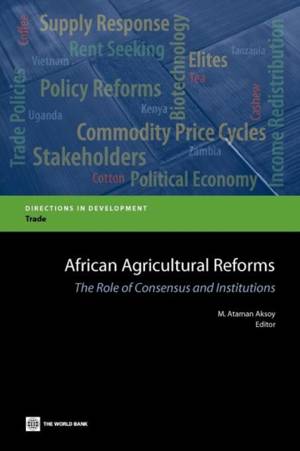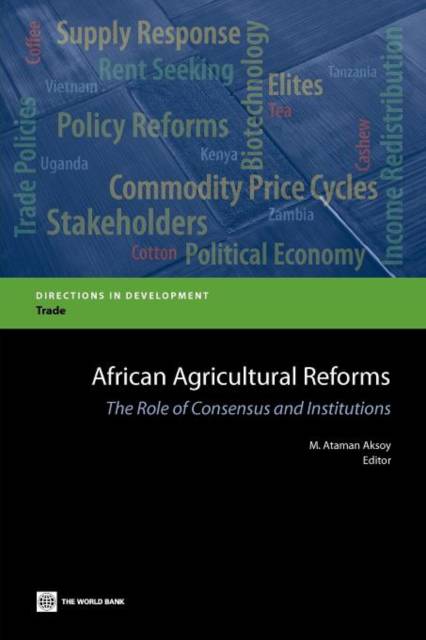
- Retrait gratuit dans votre magasin Club
- 7.000.000 titres dans notre catalogue
- Payer en toute sécurité
- Toujours un magasin près de chez vous
- Retrait gratuit dans votre magasin Club
- 7.000.0000 titres dans notre catalogue
- Payer en toute sécurité
- Toujours un magasin près de chez vous
African Agricultural Reforms
The Role of Consensus and Institutions
59,45 €
+ 118 points
Description
During the 1990s, SSA countries initiated agricultural policy reforms to increase producer incentives and increase growth. Yet, agricultural growth rates after the reforms have been uneven. This has been attributed to lack of supporting infrastructure or the inability to respond to incentives by the smallholders.
Spécifications
Parties prenantes
- Editeur:
Contenu
- Nombre de pages :
- 334
- Langue:
- Anglais
- Collection :
Caractéristiques
- EAN:
- 9780821395431
- Date de parution :
- 25-06-12
- Format:
- Livre broché
- Format numérique:
- Trade paperback (VS)
- Dimensions :
- 152 mm x 229 mm
- Poids :
- 449 g

Les avis
Nous publions uniquement les avis qui respectent les conditions requises. Consultez nos conditions pour les avis.





